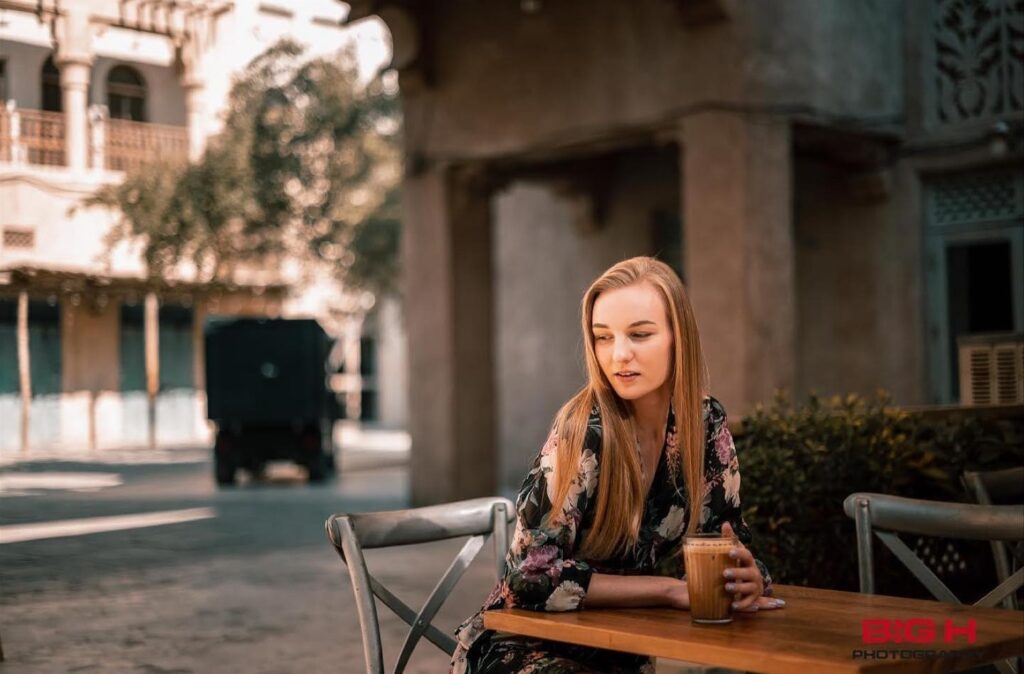Dubai is a global melting pot of cultures, and its food scene reflects this diversity in the most visually stunning ways. From high-end Michelin-starred restaurants to bustling street food markets, Dubai offers a rich tapestry of flavors and presentations that beg to be captured through the lens. Whether you are a seasoned professional or an aspiring food photographer, mastering the art of food photography in Dubai requires an understanding of lighting, angles, composition, and the unique vibrancy of the city’s culinary offerings.

The Best Places for Food Photography in Dubai
Dubai’s dining landscape is as extravagant as its skyline. Here are some must-visit locations for food photographers:
- Souk Al Bahar and Madinat Jumeirah – These traditional-style marketplaces provide a backdrop of Arabian charm, perfect for capturing authentic Emirati cuisine in a heritage-rich setting.
- Downtown Dubai Restaurants – Restaurants with a view of Burj Khalifa or the Dubai Fountain offer not only exquisite dishes but also stunning urban scenery.
- La Mer and JBR Beachfront Cafés – Ideal for vibrant, colorful food photography with an ocean breeze and relaxed ambiance.
- Global Village – This seasonal attraction showcases an array of international dishes, from Turkish baklava to Indian chaat, in a lively and multicultural atmosphere.
- Alserkal Avenue – This creative district hosts trendy cafés with artistic plating, perfect for a modern and edgy food photography aesthetic.
Techniques for Capturing Stunning Food Photos
1. Lighting is Everything
Dubai is blessed with abundant natural sunlight, making it an excellent city for natural light photography. Early mornings and late afternoons provide the softest and most flattering light for food photography. If shooting indoors, position your dish near a large window to take advantage of diffused daylight.
2. Angles and Composition
- Overhead Shots (Flat Lays): Perfect for dishes with intricate details, such as Arabic mezze or sushi platters.
- Side Angles (45 Degrees): Ideal for layered foods like burgers, cakes, and tall beverages.
- Close-ups: Emphasize textures and details, such as steam rising from a freshly brewed Arabic coffee or the glossy sheen of a date syrup drizzle.
3. Styling and Props
Dubai’s food is rich in colors and textures, making it crucial to style dishes in a way that enhances their appeal. Use props like gold-accented cutlery, marble tables, and traditional Arabian elements such as ornate tea sets or spice trays to create a visually appealing frame.
4. Post-Processing and Editing
A few minor tweaks can elevate an image from good to extraordinary. Adjust brightness, contrast, and saturation to make colors pop without over-processing. Many Dubai-based food photographers use Adobe Lightroom or Snapseed to enhance their images while maintaining a natural look.
Food Photography Trends in Dubai
Dubai’s food scene is constantly evolving, and staying ahead of trends can help photographers create compelling content. Some of the hottest food photography trends in Dubai include:
- Luxury Aesthetic: High-end restaurants emphasize opulent presentation with gold leaf, truffle shavings, and edible flowers, which require a refined approach to photography.
- Street Food Revival: Capturing traditional Emirati street food such as shawarma, falafel, and luqaimat (sweet dumplings) in their authentic settings provides a contrast to fine dining photography.
- Health & Wellness Focus: Smoothie bowls, vegan platters, and organic dishes are becoming increasingly popular, often photographed with natural light and minimalistic compositions.
- Interactive Elements: Dishes that involve tableside preparation, such as nitrogen-infused desserts or flaming grills, create dynamic photo opportunities.
Working as a Food Photographer in Dubai
Dubai’s hospitality industry thrives on high-quality visual content, making it an excellent city for professional food photographers. Restaurants, cafes, and food brands frequently collaborate with photographer and videographer in Dubai to create visually enticing images for social media, menus, and marketing campaigns. Networking with local businesses and building a strong portfolio can open doors to exciting projects in this field.
Conclusion
Food photography in Dubai is more than just capturing meals—it’s about telling a story, celebrating culture, and enticing viewers with stunning visuals. With the right techniques, locations, and trends in mind, any photographer can showcase the city’s culinary excellence in a way that captivates audiences worldwide. Whether you’re photographing a lavish brunch in a five-star hotel or a humble cup of karak chai in a bustling souk, Dubai’s diverse food scene offers endless inspiration for food photography enthusiasts.



